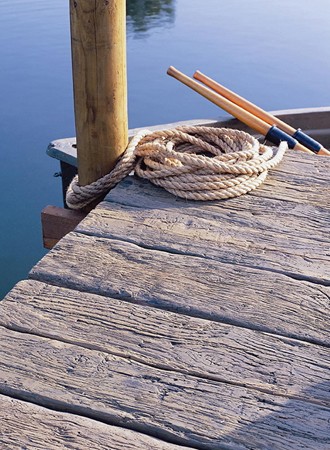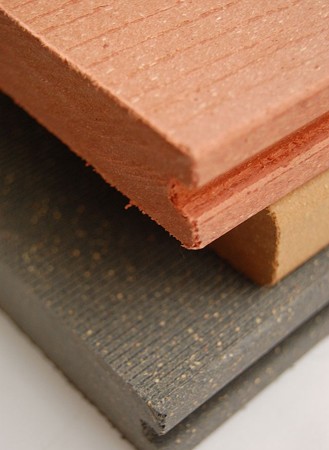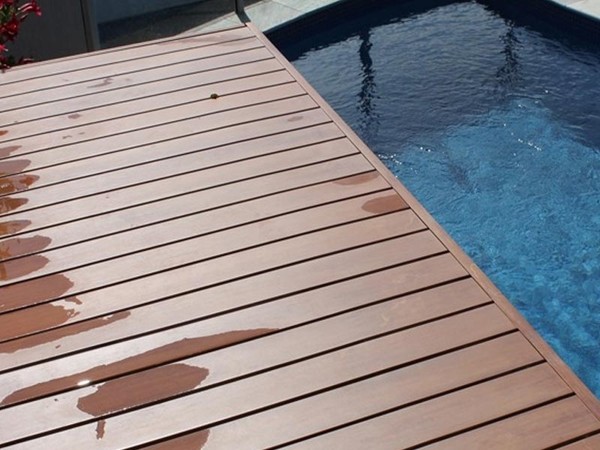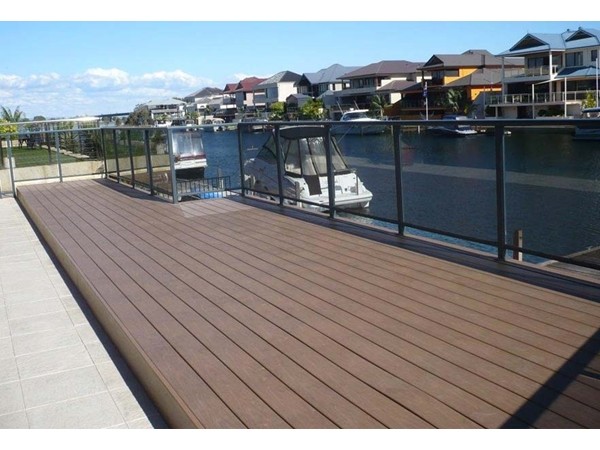Alternative decking boards -alternative to traditional timber decks, that is - now make up 50 per cent of some areas in the American decking market, and one commentator says Australia will follow suit.
Composite products are the dominant alternative to timber for decks in Australia, and most Australian suppliers offer either a wood-plastic composite or a rice husk-plastic version.
Eamon Hurley from Composite Materials Australia explains that Australia is five years behind America in the movement away from traditional hardwood decks towards alternative decking boards for two main reasons. This includes lingering stereotypes about composite decking, and the yet to be fully realised effect of the Illegal logging Prohibition Act of 2012.


Advances in composite decking has seen products such as Millboard (above left) by Urbanline Architectural reach near imitation of real timber.
“Australia has been tracking at about a five year lag time behind what the USA has done since we started to import composite decking,” Hurley says.
“But we have been growing by about 20 per cent each year consistently which means there is a growing share of composite decking going down compared with timber decking.”
Price difference and the Illegal logging Prohibition Act of 2012

The Illegal logging Prohibition Act of 2012 stipulated hardwood suppliers to trace their product sources to sustainable, certified, legal and sustainably managed resources. This also meant alternative decking suppliers weren't competing against black market trading and could compete on a level playing field.
Composite decking boards are expensive but Hurley predicts that composite suppliers will see an increase in their Australian market share because timber yards can no longer sell unsustainable hardwood products at a low price and out-price alternative decking options.
“All the timber yards in Australia were going to Asian countries and buying black market hardwood timber like Merbau and Kwila and selling it for cheap back in Australia,” he says.
“They were literally paying villagers to butcher their rainforests so we could have affordable hardwood decking back home in Australia.”
“But the Illegal logging Prohibition Act now means we have to prove that we are sustainably logging or buying from sustainable suppliers, which is a far more expensive process.”
“Combine this with the dropping price of composite decking products and the market gap between traditional and composite decking is going to continue to shrink.”
Boral Timber’s national market development manager, Clinton Skeoch, agrees that Australian Timber suppliers have become more committed to sustainable logging. He cites Boral’s commitment to the Australian Forestry Standard (AFS) Chain of Custody certification, which stipulates all products from manufacturing sites be traced from source to processing and distribution, and utilise certified, legal and sustainably managed resources, as just one example.
Improvements in splitting, scratching, stains and colour fade

When quizzed on the main pain points that Australian building designers have with composite decking products, Hurley was quick to address what he felt was the main issue:
“Chinese products, which are generation one products, are still sold at hardware stores and give the alternative decking market a bad name,” says Hurley.
Hurley explains that the consensus that composite decking is prone to splitting and scratching - a constant battle for the industry -began with generation one products made from saw dust and soft plastic, which are still manufactured by Chinese companies and sold in Australia.
“Scratch and splitting has been a major burden on the industry; it was a problem with generation one products and is unfortunately still a problem with all Chinese products and at least one Australian manufacturer.”
“Generation one products are made from recycled pine saw dust and polyethylene (milk bottles), so you’ve got soft plastic and soft wood combined to make a wood composite, which leads to a product that’s soft enough to scratch with your fingernails let alone with furniture, shoes and other household items.”
However, this combination has been used to an award winning effect and Australian suppliers like ModWood, who include up to 90 per cent recycled material in their decking boards and include no nasty chemicals in their production process, would argue it’s environmentally responsible.
Like splitting and scratching, Hurley admits that colour fade has been another problem traditionally attributed to composite decking boards.
“Colour fade also goes to this Chinese and ModWood problem, when you have an exposed wood fibre component, where on the surface you can see all the speckles of mixed saw dust and plastic, there is no UV protection on that exposed cellulose content so it’s going to fade.”
“We’ve stopped this by using 100 per cent PVC products (such as the above pictured 'Passport' range) or a plastic coating over the top of the board which protects the scratchability, the stain resistant and UV stability.”
Industry Attitudes
In 2009 the Timber Development Association NSW Limited published ‘Attitudes to Timber Decking’, which documented industry attitudes towards decking varieties and applications. It announced the following observations about industry attitudes towards wood plastic composites:
“Wood plastic composites have been reported as making inroads to the Australian decking market sector. With an apparently strong marketing proposition it was surprising that only 15% of specifiers and 10% of builders had specified or used wood plastic composites for decking.”
Of those that have specified and used the product, a reasonable level of satisfaction with the finished product was registered. However, the majority of specifiers and builders expressed a number of concerns that prevented them from specifying or utilising the product.
These concerns included:
-
Marks easily
-
Gets very hot, hard and heavy
-
Much harder to handle
-
Difficult installation - requires predrilled non-binding fixings
-
Unnatural colour
-
Hollow sections allow vermin refugees
-
Feel and texture – feels “waxy”
Many of the respondents reported that the best attributes of wood plastic composites were:
-
Straightness
-
Maintenance
-
Standardised products

